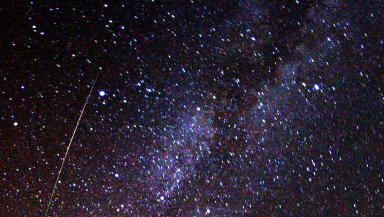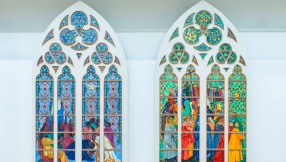
The annual Perseid meteor shower will light up the skies this weekend. Skygazers will be able to see one of the highly anticipated astronomical events of the year when this month's meteor shower peaks between the evenings of August 11-13.
The showers can be viewed anywhere across the U.S., feven from bustling cities such as New York.
The Perseid meteor shower is expected to be all the more visible and dazzling with the absence of moonshine as only a crescent moon is expected.
Expect to see hundreds of shooting skies in the early predawn hours.
The Perseid meteor shower occurs in July and August as the earth orbits through the debris of the Swift-Tuttle comet. Chucks of debris - rocks made of iron-nickel and other minerals - gets pulled into the earth from our planet's gravity, which turns into balls of hot gas when entering Earth's atmosphere.
The meteors entering the earth when darkness falls come from the constellation Perseus. On August 12, when the meteor shower peaks at its brightest, over a hundred shooting stars, or "falling stars" will be seen per hour.
According to EarthSky, the Perseids strengthen in number as the night deepens into midnight and "typically produce the most meteors in the wee hours before dawn."
The best way to view the meteor showers is to drive to a place without any city lights. No special equipment is required to view the meteor shower.
This year's star show is all the more special because the crescent moon, Jupiter and Venus will align together just as the Perseids peak. According to NASA, "The alignment occurs in the eastern sky before sunrise on the three mornings of highest meteor activity."
The meteors entering into Earth are tiny, some as small as a grain of sand, but they are traveling at speeds of up to 160,000mph, which creates a "train or tail" when entering Earth's atmosphere.
Huge fireballs have been spotted flying past Earth and have been sighted since July 30, 2013. Star-gazers are reporting seeing huge fireballs whiz past in the night sky.
The Perseids have been observed by star-gazers for over 2,000 years and is referred to as the 'tears of St. Lawrence' by some Catholics.
Watch a video of a Perseid meteor shower below:













